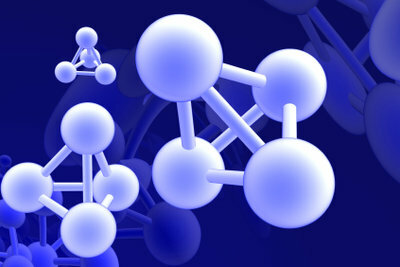A brief explanation of ATP production
Adenosine triphosphate, or ATP for short, is the most important energy source in the body and is used for almost all processes that require energy. But where is ATP created and how? The processes involved in obtaining ATP are briefly presented below.

What is ATP
- ATP stands for adenosine triphosphate and is a nucleotide consisting of the nucleoside adenine and three phosphate groups bound to it in a chain.
- ATP is the most important energy carrier in all living things and is required for many processes in the body.
- The phosphorus bonds are very energetic and connected to one another via anhydride bonds. H. about dehydration.
- If ATP is split again hydrolytically by appropriate enzymes, i.e. by adding water, the previously stored one is released energy free and available again.
- What remains is ADP, which is used again for further ATP production.
Function of ATP in the metabolism - informative
Anyone who does physical work needs energy for it. The provision of ...
How ATP production works
- ATP production takes place in two different ways, substrate chain phosphorylation and oxidative phosphorylation.
- In substrate chain phosphorylation, an enzyme-catalyzed reaction takes place in which a phosphate group from one transferred to another molecule, such as 1,3-bisphosphate glycerate (BPG) in glycolysis, to an adenosine diphosphate (ADP) will. In this case, the BPG is a phosphate donor.
- Oxidative phosphorylation consists of two basic processes. Electron transport chain or respiratory chain and chemiosmosis.
- In the former, electrons are made by NADH and FADH2-Molecules that were previously formed during glycolysis, pyruvate oxidation and in the citric acid cycle, through the protein complexes I - IV, whose energy pumps protons from the inner matrix of the mitochondrion into its intermembrane space will.
- This creates an H+-Concentration gradient and a charge imbalance between matrix and intermembrane space, As a result, in the second process, the protons return to the matrix through the channel protein ATP synthase diffuse. The protein complex ATP is made up of ADP and Pi (Phosphate residues) synthesized.
- The reason why the synthesis of ATP follows a longer electron transport chain is that an immediate release of energy from the NADH would be too exergonic. The energy released could not be controlled and temporarily stored. Therefore, the energy is used in partial steps to build up a gradient.
This is how the ATP production works in its basic features, with the aerobic, i.e. oxygen utilizing cellular respiration with preceding glycolysis, up to 32 molecules of ATP are formed per glycosyl molecule will. Two each in glycolysis and in the citric acid cycle, 28 in ATP synthesis during the respiratory chain.
How helpful do you find this article?
